#rhino sculpture
Text


#crystal shop#crystal animal#rhino carving#rhino sculpture#moss agate#crystal healing#metaphysical#crystal store#crystals#small business#healing crystals#beginner witch#witchy#baby witch#etsy shop#crystal stim
0 notes
Text
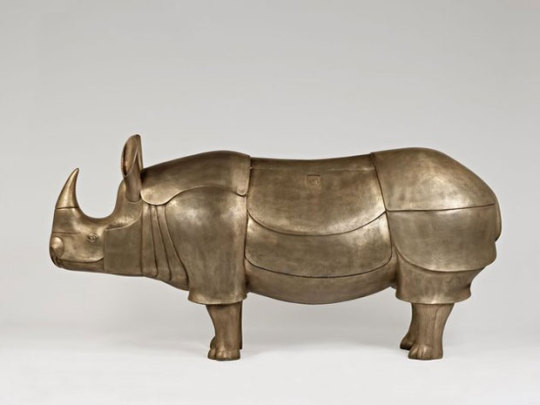


François-Xavier Lalanne, Rhinocrétaire I, original made in 1967
© François-Xavier Lalanne, ADAGP, Paris and DACS, London 2023
328 notes
·
View notes
Text




'Rhino' wooden spoon carved in Maple wood with deer antler tips and seed beads.
56 notes
·
View notes
Text

Rhino (Classic) from Marvel Comics - Aluminum Foil Sculpture
#rhino#rhino fanart#rhino spiderman#spiderman#spiderman fanart#marvel#marvel comics#marvel fanart#marvel art#villain#supervillain#super villain#foil#sculpture#art
35 notes
·
View notes
Text
It’s Clara! (probably) 🦏
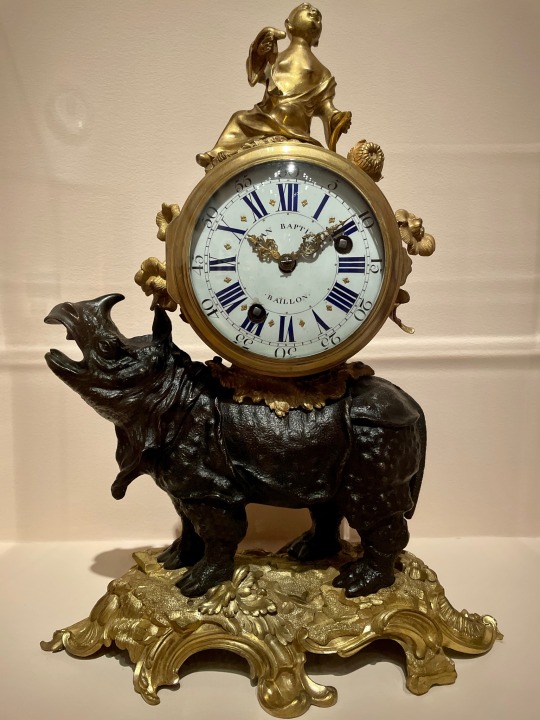


Jean-Baptiste Baillon, clockmaker (French, d. ca. 1770)
Attributed to Jean-Joseph de Saint-Germain,
bronze maker (French, 1719-1791)
Mantel Clock, after 1749
Virginia Museum of Fine Arts display
“This mantel clock exemplifies the exuberant Rococo style of the mid-18th century that delighted in the apparent novelty and exoticism of Asian cultures as they were perceived in the popular European imagination.
Ménagerie clocks featuring models of unfamiliar beasts from Africa and Asia became highly fashionable collectibles in the 1740s. Though the rhinoceros was known in Europe as early as the 16th century, it was not until a live Indian rhinoceros named Clara was brought to the Netherlands in 1741 that the animal became a widely recognized marvel. Clara was exhibited throughout Europe for nineteen years, delighting average citizens and courtiers alike. In 1749, she arrived in Paris, where she inspired drawings by many artists and studies by scientists. The model for this clock was likely based on one of these renderings.”
#animals in art#european art#museum visit#rhino#rhinoceros#Indian rhinoceros#French art#18th century art#clock#bronze#sculpture#decorative arts#metalwork#Clara the Rhinoceros#VMFA#Virginia Museum of Fine Arts
22 notes
·
View notes
Photo


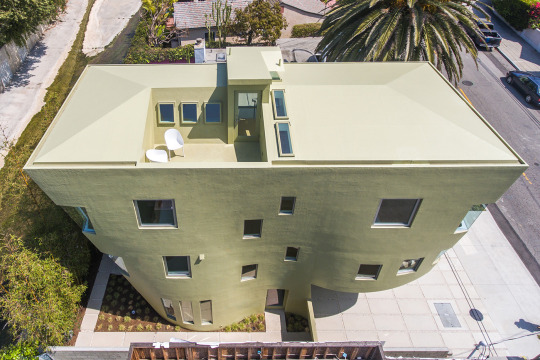




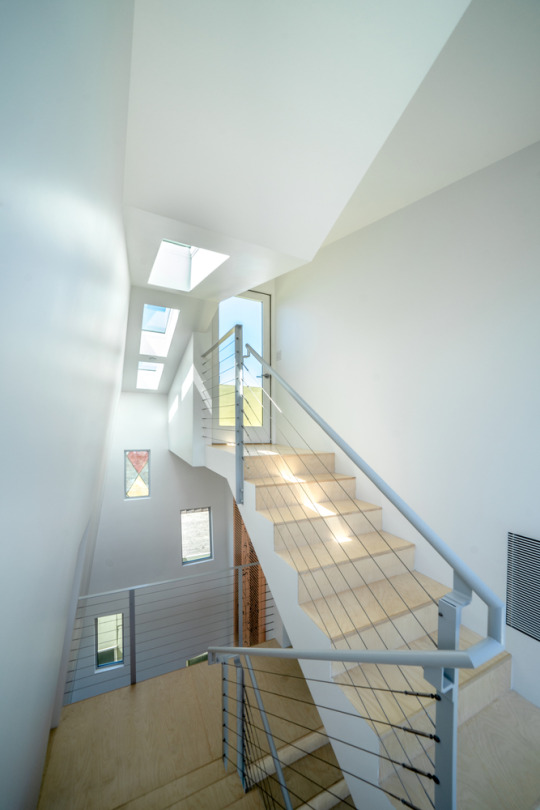


A+M House, Santa Monica Canyon, Los Angeles, USA,
Eric Owen Moss Architect
#art#design#architecture#interiors#santa monica#los angeles#california#eric owen moss#sculpture#vertical#guitar#cnc milling#rhino 3d
141 notes
·
View notes
Text
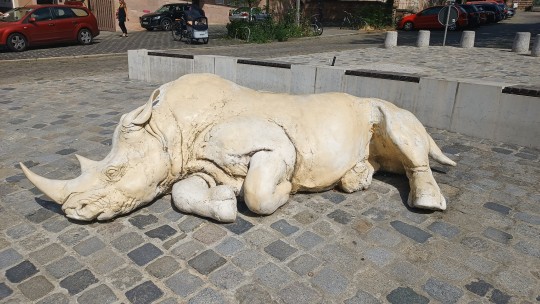
"Das Schlafende Nashorn" (The Sleeping Rhino) sculpture in Nuremberg, Bavaria, Germany
This is the work of Polish sculptor Dorota Hadrian (2016) and take's Albrecht Dürer's 'Rhinoceros' (1515) as its inspiration.
#nurnberg#Nuremberg#bayern#Bavaria#sculpture#rhinoceros#The Sleeping Rhino#Dorota Hadrian#Das Schlafende Nashorn#Nürnberg
50 notes
·
View notes
Text
Molding digital pottery
Μοιάζουν με δοχεία
They may look like vessels,
ίσως όμως είναι πλάσματα κάποιου απύθμενου βυθού ή αιθέριας απεραντοσύνης.
but they might be creatures of an immeasurable oceanic depth or an ethereal infinity.
Άγνωστο το περιεχόμενο αυτών των δοχείων, η χρήση, το είδος, το φύλο, ο σκοπός της ζωής τους και άλλα παρόμοια υπαρξιακά θέματα.
The contents of these vessels, their use, species or…

View On WordPress
3 notes
·
View notes
Photo
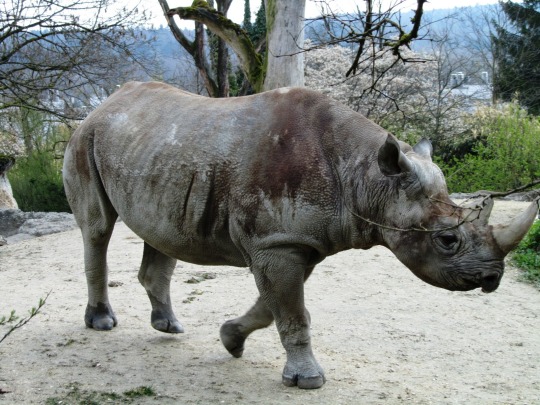
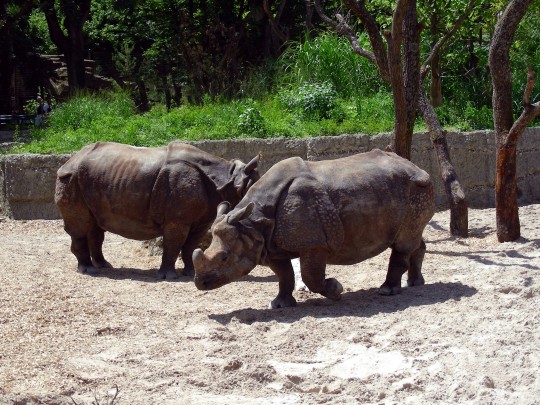




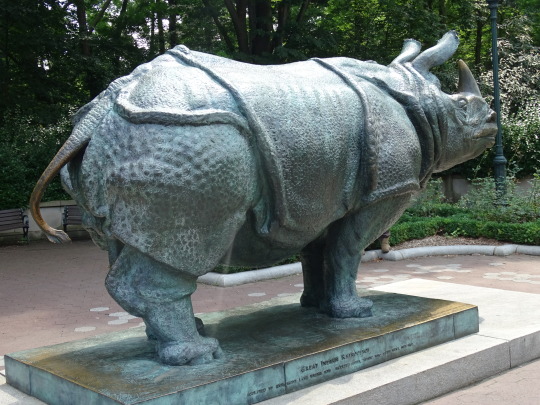
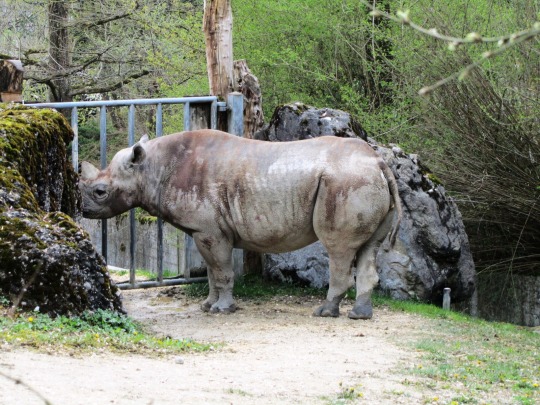


Save The Rhino Day
Save the Rhino Day, celebrated globally on May 1, is a day centered around raising awareness of the rhino’s plight in the world, and highlighting ways to help this incredible animal. This day is especially important given the current devastating statistics — on average, one rhino is poached somewhere in the world every 22 hours. On this day, various animal rights organizations, non-profit companies, zoos, animal activists, and other concerned groups provide opportunities to encourage more rhino conservation efforts from people around the world.
History of Save The Rhino Day
To trace the origins of the Rhinoceros, we’d have to go back some millennia — almost 56 million years ago, to be precise. That’s when the first ancestors of the modern Rhinos roamed the planet. They were more horse-like in structure and had no horns. Old rhino bones found from this period in North America show a gradual evolution from this old horse-like structure into one more aligned with today’s rhino. Over these years, there were three distinct species that scientists think might be the ancestors of today’s rhinos. One of these was called the ‘running rhino,’ which was adapted for speed.
Another was more aquatic and resembled today’s hippopotamus. The last, most direct ancestors to the modern rhinoceros appeared approximately 25 million years ago and had multiple sub-species in their families. Of these, the wooly rhinoceros was one of the largest subspecies, weighing in at almost four times the size of the average African elephant, and boasting one-meter-long horns. This species inhabited a large area, from Siberia to the British Isles. These plant-eaters lived alongside the wooly mammoths, and have been found fossilized in ice and in cave paintings made during that period.
These rhinos only lived in Asia initially but began traveling to other places around 25 million years ago. Over time, these rhino ancestors roamed the continents, primarily living in Eurasia (Europe and Asia combined) and North America. However, the American rhinos went extinct sometime between 5.4 and 2.4 million years ago.
Rhinos have also featured in many Asian and African legends — they are the fire-stamping heroes in many stories from Burma, India, and Malaysia. According to these stories, rhinos appeared every time a fire was lit in the forest and would stamp out the flames. So popular is this tale that it even featured in a popular 1980 South-African movie named “The Gods Must Be Crazy.”
Unfortunately, these once-abundant creatures have lost out to human activity. Hunting, and now, poaching and habitat loss, have drastically reduced the number of rhinos across the world. Rhino horns are also integral to traditional medicine in many parts of Asia, with people believing it has mystical powers. Since 2007, there has been a sharp increase in poaching activity and illegal trade of rhino horns, to the extent that many subspecies of rhinos have been declared extinct and the entire rhino population is listed as ‘endangered’.
Save The Rhino Day timeline
1973 A Symbol of Queer Identity
Two Boston artists, Daniel Thaxton and Bernie Toale create a lavender rhinoceros as a symbol to increase awareness of gays and lesbians and put it in a series of subway posters.
2011 No More Black Rhinos
The Western Black Rhino — which used to live in Cameroon, Chad, the Central African Republic, Sudan, and South Sudan — is declared extinct because of excessive poaching.
2012 A Ray of Hope
For the very first time, a Sumatran rhino — the smallest of the rhino family — is born in captivity in the Sumatran Rhino Sanctuary in Indonesia; this miracle repeats in 2016, and then in 2022.
2018 A Sad Farewell
The world bids goodbye to the last known male northern white rhino; only two females survive to this day.
Save The Rhino Day FAQs
What day is World Rhino Day?
On September 22 each year, the global community celebrates the rhinoceros and explains what people can do to help them.
How many rhino species are there?
At present, there are five species of rhinos in the world — the white rhino and the black rhino (both found in Africa), and the Indian, Javan, and Sumatran (all found in Asia).
Are rhinos endangered?
The black, Javan, and Sumatran rhinos are still listed as ‘critically endangered,’ while the entire species is classified as ‘endangered.’
How to Observe Save The Rhino Day
Learn about the rhinoceros
Visit a rhino
Help save the rhino
Uncover more interesting information about this magnificent animal. Watch documentaries featuring the rhino, read books and other literature about them, and discover more studies and research that show just how the rhino lives.
Why not go see a rhinoceros in real life? Check out rhinos at a local zoo or plan a trip to visit rhinos in the wild.
Research the efforts various groups make towards saving the rhino, and check out what you can do to help. These could include online volunteering services, donations of funds, and more.
5 Fun Facts About The Rhinoceros
The rhino communication method
They don't have 20-20 vision
How the white rhino got its name
Their horns are like our nails
And still, people steal their horns
Rhinos make funny sounds — like snorting, sneeze-like sounds, and even honking — and use their bodily waste to 'speak' to other rhinos.
Rhino eyesight is notoriously poor, so much so that if an animal only 100 feet away — in an open space, too — stood motionless, the rhino wouldn't be able to spot them.
This rhino isn't actually white — English explorers mistook the Afrikaans 'wyd,' which refers to the huge girth of this animal, as 'white' and the name stuck.
Rhino horns are made up almost entirely of keratin, which is also the protein found in human hair and nails.
Even as rhino horns are proven to have no health benefits, signs in museums — like the National Museum of Scotland — notify visitors that the horn on display is a replica, as the real one has been stolen.
Why Save The Rhino Day is Important
It helps increase awareness
Creating safe havens for rhinos
Building a rhino-loving community
Rhinos are becoming increasingly rare in the wild, and only continuous efforts to raise awareness, like celebrating Save The Rhino Day, can help this endangered species. Do your bit today to support rhinos.
The spike in awareness such days provide also subsequently raises the amount of help being offered to save the rhinos. These increased efforts could help secure various safe and protected spaces for the rhino to survive and thrive.
Conservation efforts have had a significant impact in the past — various subspecies of rhinos have seen their numbers gradually increase over the years as a result of these activities. After these celebrations, we are left with a passionate and motivated global community that wants to see the rhinoceros flourish in the decades to come.
Source
#Great Indian Rhinoceros by Katharine Lane Weems#Bronx Zoo#New York City#Indian rhinoceros#Zoo Zürich#Zoo Basel#Zolli#Lincoln Park Zoo#Chicago#USA#Schweiz#Switzerland#sculpture#outdoors#original photography#travel#summer 2018#vacation#day trip#Save The Rhino Day#SaveTheRhinocerosDay#SaveTheRhinoDay#1 May
2 notes
·
View notes
Text
Here's a Chilotherium I made a while back. I'm very proud of it so I thought I'd share.


16 notes
·
View notes
Text

APR87P10-17: rhinoceros sculpture, 1987
Photograph by Robert Sommer. The Mudflats Sculptures were a series of large-scale driftwood installations created in the Emeryville mudflats from the 1960s through the 1980s. These works reflected a time of radical change in the Bay Area and provided a forum for community-driven public art in California. UC Davis Professor Robert Sommer photographed these works, providing a comprehensive visual documentation that spans decades.
California College of the Arts Libraries
California Revealed
#rhinoceroses#rhinos#sculptures#mudflats sculptures#robert sommer#california college of the arts libraries#california revealed#public art
1 note
·
View note
Text
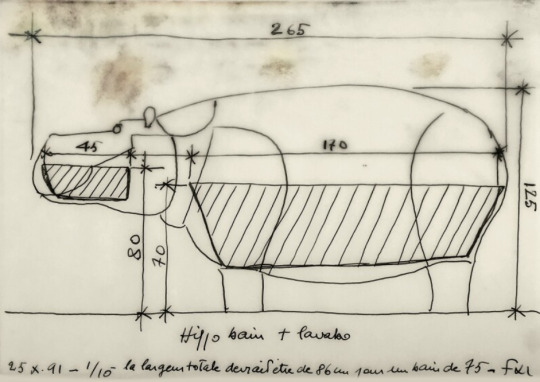

François-Xavier Lalanne, drawings for Rhinocrétaire I, original made in 1967
© François-Xavier Lalanne, ADAGP, Paris and DACS, London 2023
see it here
129 notes
·
View notes
Text
Verdite Rhinoceros sculpture
Artist: Noah Rhambo
Material: Verdite stone
Dimensions: 35cms (L) x 13cms (W) x 16cms (H)
Weight: 4.2kgs
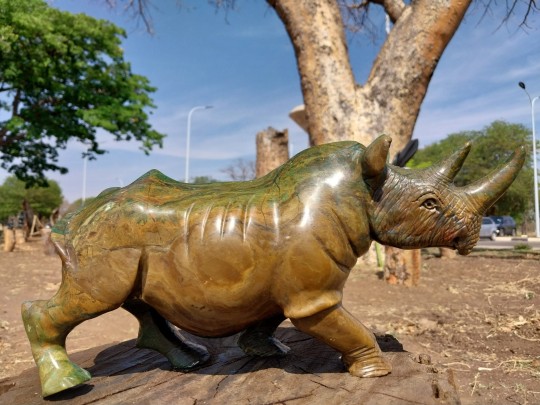


#africa#art#arts and culture#art therapy#artists#resident artist#sculpture gallery#tourism#rhino#artdecor xmasgifts Christmas christmasgiftsideas sculpturedecor decor decorations artwork Zimbabwe UK USA Germany Italy canada
0 notes
Text
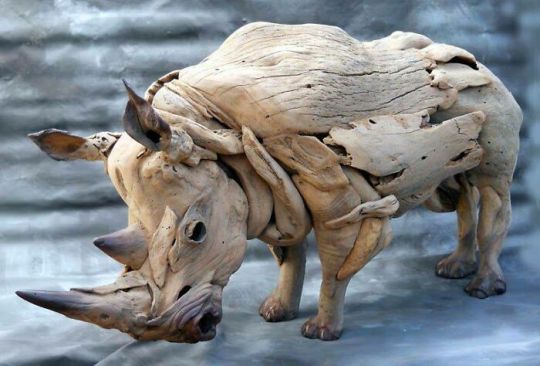
1 note
·
View note
Text

BLUE BOY PULL TOY #1 (coolidge park, chattanooga riverfront) - Composition Friday
© Erik McGregor - [email protected] - 917-225-8963
#PhotoOfTheDay#BlueBoyPullToy#JohnPetrey#CoolidgePark#ChattanoogaRiverfront#BlueBoy#RhinoStatue#RhinoSculpture#rhino#sculpture#art#PublicArt#metalwork#visitchatt#ExploreChattanooga#Chattanooga#Tennessee#chattanoogatn#nooga#noogatoday#cityscape#landscape#UrbanLandscape#LandscapePhotography#StreetPhotography#InfraredSpectrum#InvisibleLight#SuperColor#infrared590nm#ir590nm
0 notes
Text
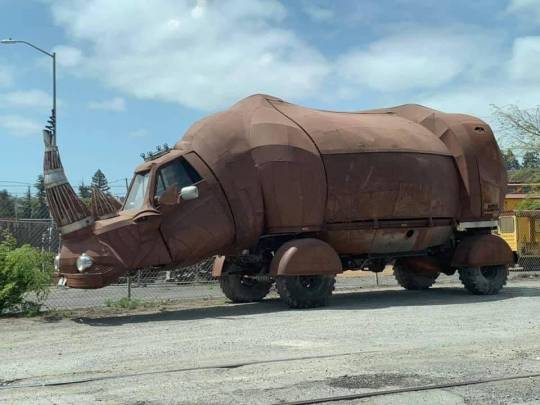
1 note
·
View note